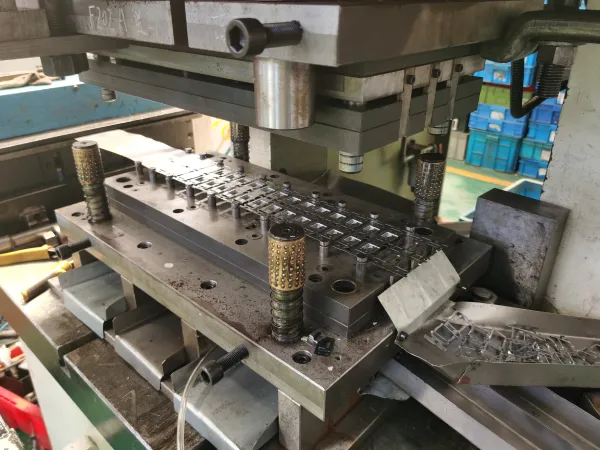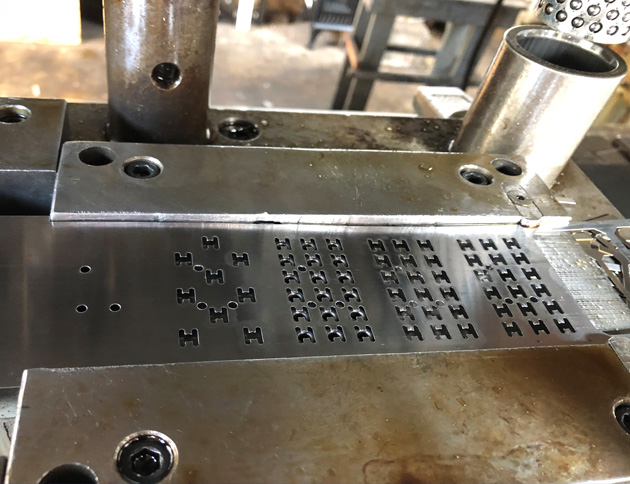The Development of Steel Stamping Processes: Technologies and Applications
The world of steel stamping procedures has actually experienced a transformative journey marked by continuous development and adaptation to satisfy the needs of modern commercial practices. From the conventional methods deeply rooted in background to the innovative innovations driving high-speed accuracy, the advancement of metal marking has been absolutely nothing except impressive. As new tooling techniques and automation discover their means right into this industry, the implications for performance and quality are extensive. The applications cover throughout a spectrum of industries, each benefiting uniquely from the advancements in metal marking procedures.
Conventional Metal Marking Methods
Traditional metal marking strategies have actually long been the structure of making procedures in different markets because of their effectiveness and accuracy. The procedure includes creating a metal sheet or coil into a preferred form by pushing it between a die and a punch. This approach is extensively used for generating big quantities of parts with high precision at a quick pace.
One of the essential benefits of typical metal stamping techniques is the capacity to keep tight resistances, guaranteeing that each component meets the called for specs consistently. This degree of precision is necessary in sectors such as automotive, aerospace, and electronic devices, where also minor inconsistencies can lead to substantial issues.
Moreover, typical metal marking strategies use affordable solutions for automation compared to other producing methods. The capacity to stamp components in fast sequence minimizes production time and lowers labor expenses, making it an appealing choice for organizations looking to maximize their manufacturing procedures.
Development of High-Speed Stamping

Among the key advantages of high-speed marking is its capacity to preserve accuracy and uniformity even at sped up processing rates. This accuracy is vital in sectors where tight tolerances and intricate layouts are called for. Additionally, high-speed marking permits the handling of a large range of materials, including aluminum, stainless-steel, and copper, further broadening its applicability across numerous markets.
Moreover, the development of high-speed marking has made it possible for suppliers to fulfill the growing need for complex parts in sectors such as automotive, aerospace, and electronic devices (Metal Stamping). By leveraging the rate and precision of high-speed marking technology, companies can enhance their competitiveness in a quickly advancing market landscape
Advancements in Tooling Modern Technology
With the evolution of these details high-speed marking allowing boosted accuracy and performance in metal creating processes, the area of steel marking has seen considerable innovations in tooling modern technology. Tooling technology plays a vital function in steel marking operations, affecting elements such as item quality, manufacturing speed, and general cost-effectiveness.
By making use of these innovative products, tooling producers can create dies and molds that withstand the high pressures and temperature levels involved in steel marking procedures, resulting in longer tool life and better production effectiveness. Overall, these innovations in tooling innovation have actually reinvented the metal stamping market, allowing makers to accomplish greater degrees of accuracy, efficiency, and price financial savings.
Integration of Automation in Stamping
As automation remains to reshape the landscape of steel stamping procedures, the integration of automated systems has actually become increasingly widespread in modern-day manufacturing facilities. Automated systems offer many benefits in metal stamping, consisting of boosted performance, improved precision, and enhanced security. By incorporating automation right into stamping processes, makers can reduce cycle times, reduce material waste, and optimize production throughput.
Among the essential components of automation in stamping is making use of robotic arms for jobs such as product handling, part manipulation, and high quality evaluation (Metal Stamping). These robotic systems can perform repetitive and labor-intensive explanation jobs with rate and precision, freeing up human operators to concentrate on even more intricate procedures. Furthermore, automation enables for real-time monitoring and change of marking processes, resulting in higher total procedure control and quality control
Additionally, the integration of automation in stamping allows suppliers to achieve constant part high quality, fulfill limited tolerances, and enhance total productivity. As innovation remains to advancement, the function of automation in metal stamping procedures is expected to broaden additionally, driving technology and effectiveness in the browse around here production market.
Applications Across Diverse Industries
Incorporating metal stamping procedures throughout diverse sectors showcases the convenience and flexibility of this manufacturing strategy. Furthermore, the appliance market benefits from metal marking processes to make components for refrigerators, washing devices, and various other home home appliances. The versatility of metal stamping processes makes it a valuable manufacturing strategy throughout different industries, demonstrating its significance in modern-day manufacturing procedures.
Conclusion
